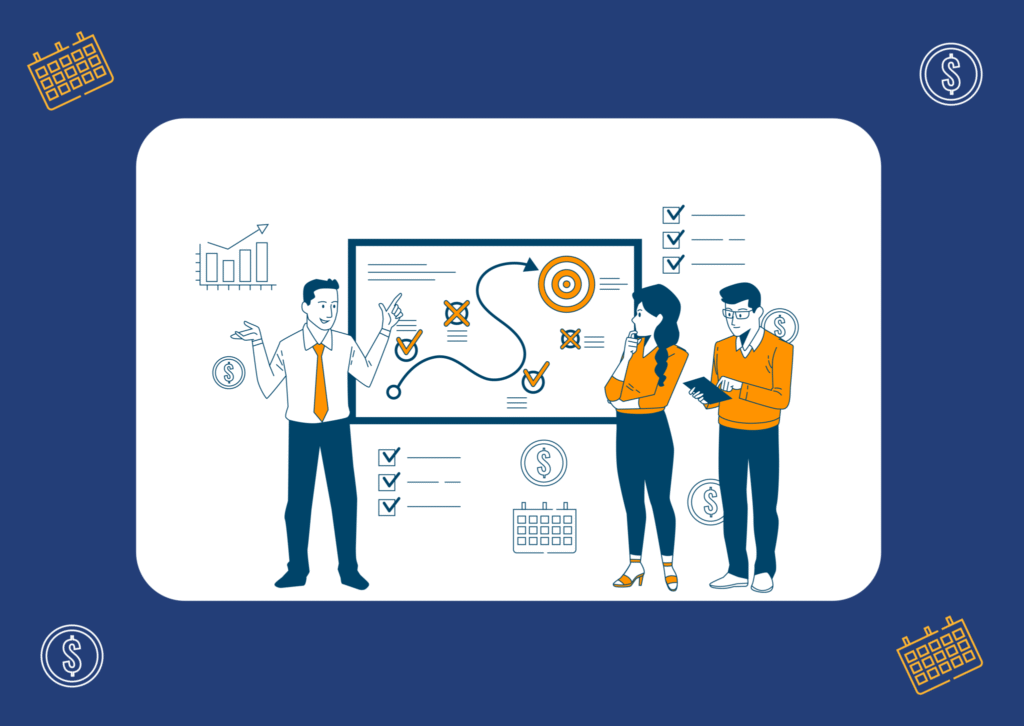If your pipeline looks busy but your revenue doesn’t reflect it, the problem might not be traffic, pricing, or even product.
It’s often the sales process—the actual journey your prospects take from “I’m curious” to “Let’s do this.”
In today’s crowded B2B landscape, people don’t drop off because they’re not interested. They drop off because the process between their interest and your offer has too many gaps, delays, or assumptions.
This article walks through how to rethink and optimize your sales process in a way that reduces friction, nurtures buyer confidence, and helps you close deals more consistently.
Why Your Sales Process Might Be Costing You Sales
Let’s start with something obvious: your prospects are busy.
They’re juggling decisions, distractions, and multiple vendor options. If your sales process creates more confusion than clarity, they’ll hesitate—and hesitation kills deals. A clear, conversational onboarding experience can remove that friction and guide prospects forward with confidence.
Some common symptoms of a broken or underperforming sales process:
- ● You book discovery calls, but demos don’t happen.
- ● Demos go well, but no follow-up or proposal gets action.
- ● Leads go cold without giving you a reason.
- ● You’re answering the same objections over and over.
The solution isn’t “sell harder.” It’s optimize smarter.
Align With the Way People Buy (Not Just How You Sell)
The biggest mistake teams make? Designing a process around their internal goals, not the buyer’s journey.
Ask yourself:
- ● Do your leads know what happens after a call?
- ● Are you addressing their concerns before they raise them?
- ● Do your follow-ups add value—or just chase?
Buyers don’t want to be closed. They want to make smart, confident decisions.
That means your job is to remove doubts, not push urgency. Instead of a “funnel,” think of your sales process as a guided path—one that helps people reach the best decision for them, not just for you.
Make Your Process Visible and Actionable
One of the easiest ways to reduce drop-offs is to simply show what happens next.
If you end every call with, “Let’s circle back next week,” you’re introducing uncertainty. Instead:
- ● Recap the conversation in writing.
- ● Clarify the next steps and who owns them.
- ● Send materials that support what they heard (not just a pitch deck).
Buyers feel more confident when they can see where they’re going—especially in a high-consideration, multi-stakeholder SaaS deal.
Automate Responsibly, Not Aggressively
Automation is powerful, but it’s also dangerous when used lazily.
Here’s what works:
- Triggering an educational email or case study right after a demo.
- Personal follow-ups based on what the prospect said, not just a sequence.
- Alerting your rep when a lead revisits the pricing page or reopens the proposal.
Here’s what doesn’t:
- 7-day auto-email chases that all say “Just checking in.”
- Cold LinkedIn DMs followed by Calendly links.
- One-size-fits-all sequences that don’t account for buying stage.
Smart automation doesn’t replace the human—it empowers the human to act at the right moment.
Train for Objection Handling—Before the Objections Arrive
Most sales drop-offs are avoidable. But only if you handle doubts before they become blockers.
Common fixes:
- Build a short FAQ into your proposal or demo follow-up.
- Share customer quotes that reflect similar concerns or industries.
- Ask “What’s giving you pause right now?” before the end of the call.
The goal isn’t to “overcome objections,” it’s to create clarity. That’s what moves people forward.
Create Momentum with Small Wins
Closing the deal often comes down to maintaining momentum. Not every conversation should lead to a sale—but every step should feel like progress.
Instead of big asks (“Are you ready to buy?”), try:
- “Would it help if I showed you how this worked for [X]?”
- “Should we loop in your tech lead to answer implementation questions?”
- “Can I send a 2-min custom video walkthrough of what we discussed?”
Each of these micro-moves makes it easier for your lead to stay engaged—without pressure.
Final Thoughts
Optimizing your sales process isn’t about adding more tech, tightening scripts, or turning your team into closers.
It’s about removing friction, building trust, and making your prospect’s decision-making process feel effortless.
When you shift from “closing deals” to guiding decisions, drop-offs decrease and conversion rates rise—not because you’re pushing harder, but because your process finally fits how people actually buy.


